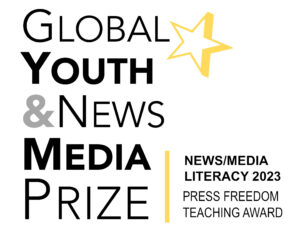
When you sing your country’s national anthem, you may think the words never change.
But for O Canada!, Canada’s national anthem (the English version), they have been translated and changed and changed again.
Now, some people are saying O Canada! should be changed yet again, to be more inclusive. (In this case, inclusive means “to include more people.”).
Canadian writer Margaret Atwood and other prominent Canadians, including former Prime Minister Kim Campbell, want the line “True patriot love in all thy sons command” to be gender-neutral.
They say the word “sons” excludes women and the line should be changed to “in all of us command.”
O Canada! was first written in 1880, in French. The words were from a French Canadian poem.
O Canada! was translated into English in the early 1900s. The English words were changed in 1908, to a less exact translation of the French words.
Later, the repeated phrase “stand on guard” was replaced with “from far and wide” and “God keep our land,” in the English version. In 1980, that version was declared the official English version of O Canada!
The group’s website, RestoreOurAnthem.ca, says, “it comes down to two words. Two words [thy sons] that make a big difference.”
“Restoring these lyrics to gender-neutral is not only an easy fix to make our anthem inclusive for all Canadians, but it’s also long overdue,” Margaret Atwood said in a statement.
Some people who don’t want the anthem changed say the word sons refers to everyone–men and women–and shouldn’t be taken literally. The group’s website says, “we have a feeling that if the word was daughters, it would be taken literally.”
Canada’s national anthem is extraordinary as it is and shouldn’t be changed, Thomas Mulcair, the leader of Canada’s NDP political party, said this week. He said that tinkering with a “national institution” is just “looking for problems.”
Other anthems in Canada
Canada also has a “royal anthem,” God Save the Queen. Many Canadians also fondly remember The Maple Leaf Forever, which was considered an unofficial Canadian anthem in the early 1900s and is still sung today at ceremonies and gatherings.
Official English version of O Canada!
O Canada!
Our home and native land!
True patriot love in all thy sons command.
With glowing hearts we see thee rise,
The True North strong and free!
From far and wide,
O Canada, we stand on guard for thee.
God keep our land glorious and free!
O Canada, we stand on guard for thee.
O Canada, we stand on guard for thee.
Official French version of O Canada!
Ô Canada!
Terre de nos aïeux,
Ton front est ceint de fleurons glorieux!
Car ton bras sait porter l’épée,
Il sait porter la croix!
Ton histoire est une épopée
Des plus brillants exploits.
Et ta valeur, de foi trempée,
Protégera nos foyers et nos droits.
Protégera nos foyers et nos droits.
This Wikipedia page gives the history of the anthems as well as some lesser-known verses which are not part of the official anthem. “O Canada! Where pines and maples grow. Great prairies spread and lordly rivers flow…”
CURRICULUM CONNECTIONS
By Kathleen Tilly
Writing/Discussion Prompt
What is your reaction to this story? Do you think the anthem should be changed – why or why not?
If it “sons” is changed to “all of us”, do you think the Canadian national anthem would include all people living in Canada? In your opinion, would this change represent all people, or would more changes have to be made?
Reading Prompt: Demonstrate Understanding
Often we sing songs or anthems without thinking about what the words actually mean. Read the full version of O Canada above and use your own words to explain what the anthem is about. You can either summarize the anthem in a few sentences or try to re-write it in your own words line by line.
Junior
Demonstrate understanding of increasingly complex texts by summarizing and explaining important ideas and citing relevant supporting details (OME, Reading: 1.4).
Intermediate
Demonstrate understanding of increasingly complex texts by summarizing important ideas and citing a variety of details that support the main idea (OME, Reading: 1.4).
Grammar Feature: Writing structure
A story, such as this news article is written in using one type of structure and a song, such as Canada’s national anthem, is written using a different structure. Compare the two styles of writing and explain the similarities and differences.







